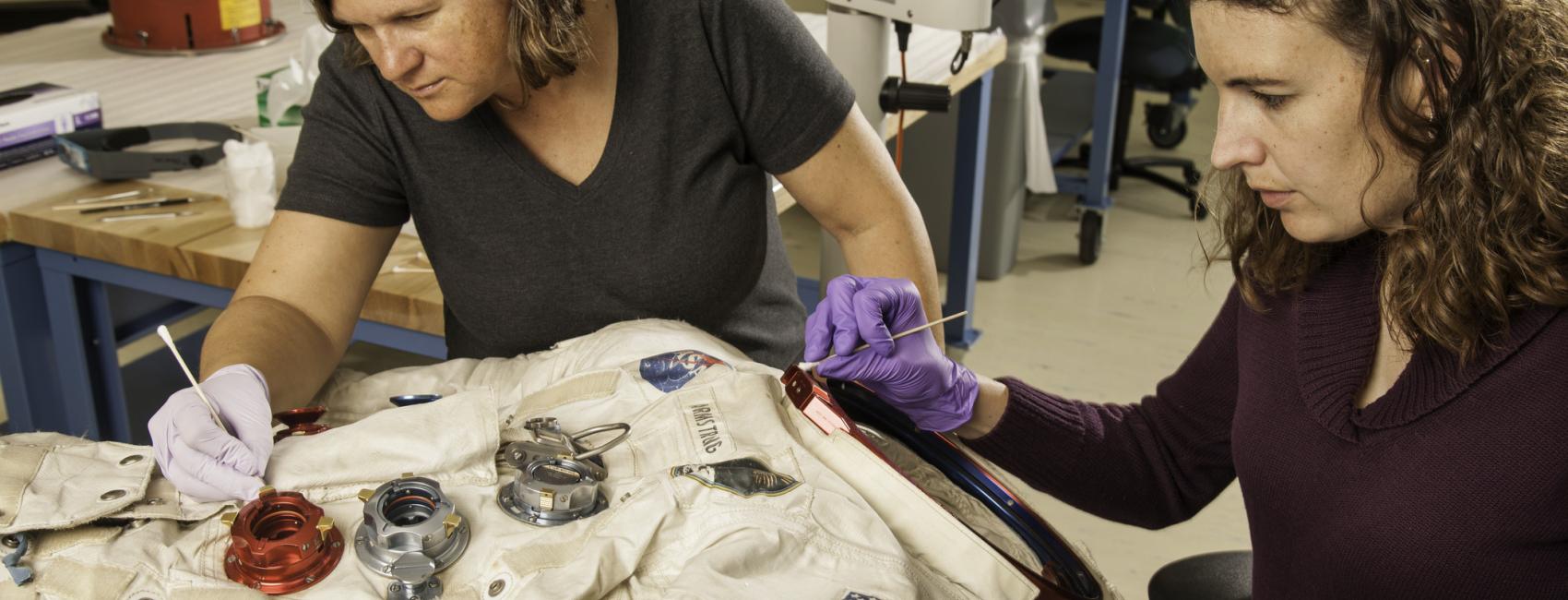
Jul 28, 2017
By Caleb Wong, Digital Content Intern
You’ve probably heard of the National Aeronautics and Space Administration (NASA), but have you heard of the Italian Space Agency or the European Space Agency? NASA works with these groups, among others, to explore the frontiers of space together. It wasn’t always this way; Russia and the United States both devoted countless resources to beating each other to space in the 1960s. But today, through shared missions and space stations, we work cooperatively to explore the final frontier.
Mars Express
The Mars Express, a mission lead by the European Space Agency in partnership with several European countries and the U.S., is trying to learn more about the mineral composition of Mars and its atmosphere. What is the geology of the planet like? What chemicals and minerals is it made of?
NASA worked with the Italian Space Agency to create the radar instrument that has found hints of ice water deep within the planet, among other geological discoveries—the instrument is named the Mars Advanced Radar for Subsurface and Ionospheric Sounding (MARSIS). NASA also ensures that the different spacecraft orbiting the planet can communicate with each other. The implications of these discoveries could determine if humans could travel and potentially live on Mars.
International Space Station
In the 1960s, the United States and Russia were in the grips of a Cold War and a competition to land the first human on the Moon. But no such hostility was present when the United States, Russia, and other countries sought to build the International Space Station (ISS). The largest space station ever constructed, the ISS is a partnership between European countries (represented by ESA), the United States (NASA), Japan (JAXA), Canada (CSA), and Russia (Roscosmos). The station continues to be assembled in orbit and has been visited by astronauts from 18 countries who conduct research that could not be done on Earth.
Voyager Golden Record
How do you define Earth and its inhabitants to extraterrestrials?
This was the question facing planetary scientist and writer Carl Sagan. Sagan, along with a team of colleagues, was tasked with conveying the essence of humanity through a golden record attached to the Voyager 1 and Voyager 2 spacecraft.
To share greetings of goodwill to extraterrestrials, the record, called “Sounds of Earth,” included greetings in 55 different languages beginning with Sumerian, one of the oldest languages, and ending with a greeting from an American child:
“Hello from the children of planet Earth.”
At 17 kilometers per second , the Voyager spacecraft are traveling into interstellar space with the best achievements of humanity onboard.

We rely on the generous support of donors, sponsors, members, and other benefactors to share the history and impact of aviation and spaceflight, educate the public, and inspire future generations. With your help, we can continue to preserve and safeguard the world’s most comprehensive collection of artifacts representing the great achievements of flight and space exploration.
We rely on the generous support of donors, sponsors, members, and other benefactors to share the history and impact of aviation and spaceflight, educate the public, and inspire future generations. With your help, we can continue to preserve and safeguard the world’s most comprehensive collection of artifacts representing the great achievements of flight and space exploration.